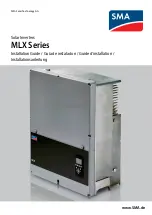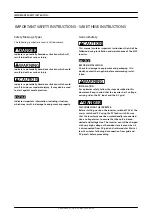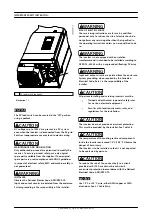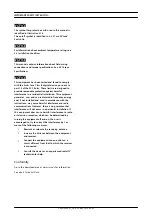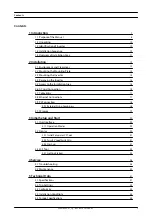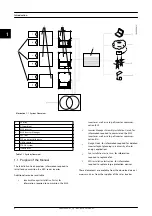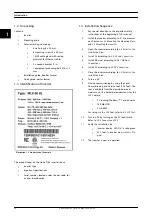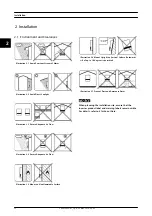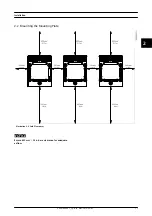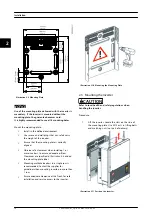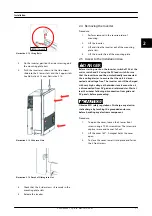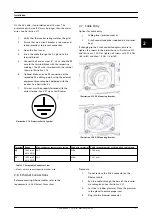
1
PV load switch (optional)
Illustration 1.1
NOTICE
The PV load switch can be secured in the ‘Off’ position
using a padlock.
CAUTION
DC voltages up to 1000 V are present in a PV system
even when the inverter is disconnected from the AC grid.
Faults or inappropriate use may lead to electric arcing.
CAUTION
MAINTENANCE AND MODIFICATION
Only authorised personnel are permitted to modify the
inverter. To ensure personal safety, use only original
spare parts available from the supplier. If non-original
spare parts are used, compliance with CE/UL guidelines
in respect of electrical safety, EMC, and machine safety is
not guaranteed.
WARNING
INSTALLER
Observe the National Electric Code, ANSI/NFPA 70.
Input and output circuits are isolated from the enclosure.
System grounding is the responsibility of the installer.
WARNING
RISK OF ELECTRIC SHOCK
These servicing instructions are for use by qualified
personnel only. To reduce the risk of electric shock, do
not perform any servicing other than that specified in
the operating instructions unless you are qualified to do
so.
WARNING
The inverter is not equipped with an isolation
transformer and is intended to be installed according to
NFPA 70, 690.35 with an ungrounded (floating) PV array.
WARNING
Input and output circuits are isolated from the enclosure.
System grounding, when required by the Canadian
Electrical Code, Part I, is the responsibility of the
installer.
CAUTION
All persons installing and servicing inverters must be:
•
Trained and authorised in general safety rules
for work on electrical equipment.
•
Familiar with local requirements, rules, and
regulations for the installation.
CAUTION
The inverter does not provide overcurrent protection.
This must be provided by the installer. See
.
CAUTION
The temperature of the cooling racks and components
inside the inverter can exceed 70 °C/158 °F. Observe the
danger of burn injury.
The inverter is to be installed so that it is not expected
to be contacted by persons.
CAUTION
To reduce the risk of fire, connect only to a circuit
provided with 125 A maximum branch-circuit
overcurrent protection in accordance with the National
Electrical Code, ANSI/NFPA 70.
NOTICE
Use 75 °C or 90 °C wire, either AWG copper or AWG
aluminium. See
IMPORTANT SAFETY INSTRUCTIO...
L00410644-01_2q / Rev. date: 2014-06-02

